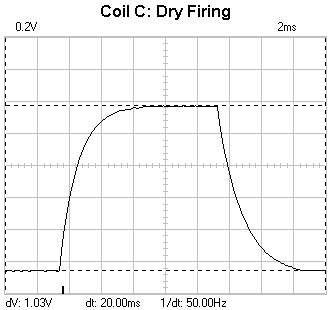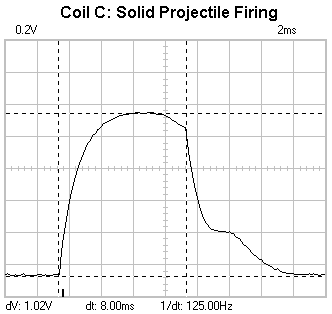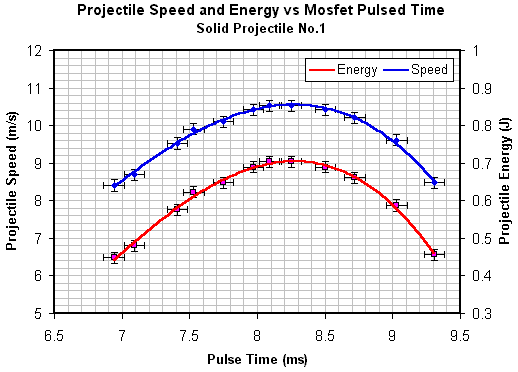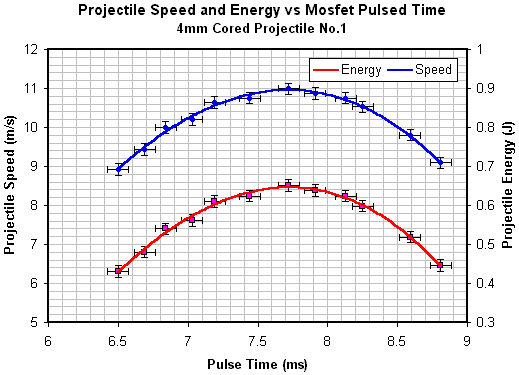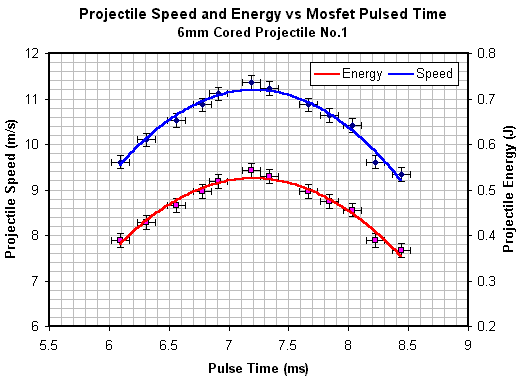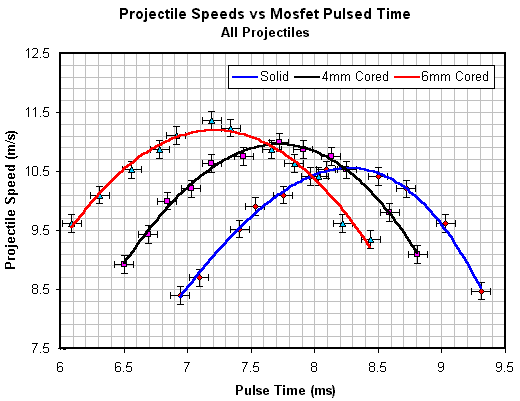
|
Open Loop Pulse Triggering Results Coil C Again we can determine the wire and coil current densities using the dry firing curve of fig 1. Coil C data indicates that the wire diameter is 1.25mm so with a maximum current of 103A, we have a wire current density of 83.9Amm-2 and a coil current density of 65.9Amm-2. Note the increase in current density over coils A and B.
FIg 1. Coil current during dry firing
Fig 2. Projectile interaction with coil
Fig 3. Solid projectile No.1 speed and energy data
Fig 4. 4mm cored projectile speed and energy data
Fig 5. 6mm cored projectile speed and energy data
Fig 6. Projectile speed comparison
Coil Efficiency Again we can show the efficiency of the coils at the peak projectile speeds, the data is tabluated below.
Table 1. Energy and efficiency data
The peak power dissipation is getting quite large now, it's about three times that of coil A. The efficiency value of 6mm cored projectile No.1 looks a little out of place being noticably smaller than the others. I don't know if this is significant. I should really plot the efficiency curves for the projectiles but it takes ages to cut and paste the raw DSO data into the spreadsheet, process it, get the curve fits, and finally integrate them to get the energy dissipated. It's possible to do the integrations in Matlab using the numerical trapezium function. There are lots of data points in the DSO files so the trapezium approximation gives quite accurate results compared to the analytical integral solution obtained from the fitted curve.
|
|


